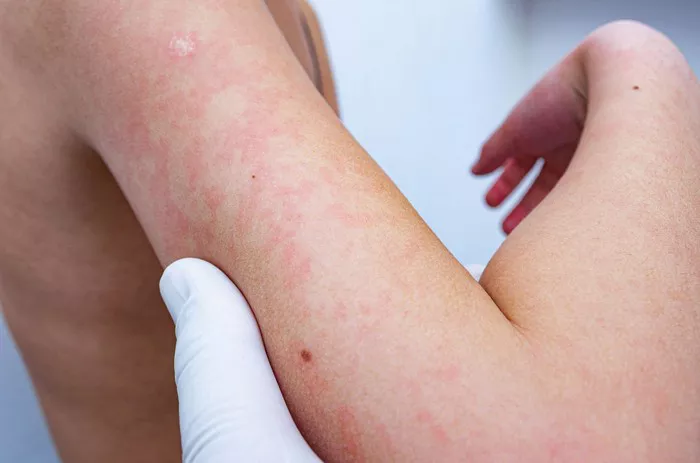The loss of skin pigmentation, resulting in patches of lighter skin color, is a condition known as vitiligo. This article explores the causes, symptoms, diagnosis, and treatment options for vitiligo, a relatively common but complex skin disorder.
Understanding Vitiligo
Vitiligo is a condition where the cells responsible for producing melanin, the pigment that gives skin its color, are destroyed. This results in irregular, patchy areas of skin that lack pigment, leading to lighter patches contrasting with the surrounding normal skin color. The exact cause of vitiligo is not fully understood, but several factors are believed to contribute to its development.
Causes of Vitiligo
Autoimmune Factors:
- Autoimmune Destruction: It is widely believed that vitiligo may be an autoimmune disorder, where the body’s immune system mistakenly attacks and destroys the melanocytes (pigment-producing cells) in the skin.
- Genetic Predisposition: There is evidence suggesting that genetics plays a role in predisposing individuals to develop vitiligo. People with a family history of autoimmune diseases or vitiligo are at a higher risk.
Neurological Factors:
- Neurochemicals: Certain neurochemicals and neurotransmitters in the skin may contribute to the destruction of melanocytes.
- Stress and Trauma: Psychological stress or trauma has been implicated in triggering or worsening vitiligo, possibly through effects on the immune system or neurochemical pathways.
Environmental Triggers:
- Exposure to Chemicals: Some chemicals or environmental factors may trigger or exacerbate vitiligo in susceptible individuals.
- Sunburn: Severe sunburn or prolonged exposure to sunlight can sometimes trigger the onset of vitiligo or worsen existing patches.
Other Factors:
- Hormonal Changes: Hormonal changes, such as those occurring during pregnancy or puberty, may influence the onset or progression of vitiligo.
- Inflammatory Skin Conditions: Certain inflammatory skin conditions or injuries to the skin may trigger vitiligo in localized areas.
Symptoms of Vitiligo - Patchy Loss of Skin Pigmentation: The primary symptom of vitiligo is the appearance of irregular patches of lighter skin color. These patches can occur anywhere on the body, including the face, hands, arms, feet, and genital area.
- Symmetrical Distribution: In many cases, vitiligo patches appear symmetrically on both sides of the body.
- Hair Affected: Vitiligo can also affect the color of hair that grows in areas affected by the condition, leading to prematurely gray or white hair in those areas.
Diagnosis of Vitiligo
Diagnosing vitiligo typically involves a physical examination by a dermatologist. The diagnosis may be confirmed through:
- Visual Examination: The dermatologist will examine the skin to identify characteristic patches of depigmentation.
- Wood’s Lamp Examination: A special ultraviolet lamp (Wood’s lamp) may be used to highlight areas of depigmentation more clearly.
- Skin Biopsy: In some cases, a skin biopsy may be performed to rule out other conditions and confirm the absence of melanocytes in the affected areas.
Treatment Options for Vitiligo
While there is currently no cure for vitiligo, several treatment options are available to help manage and improve the appearance of affected skin areas:
Topical Treatments:
- Corticosteroids: These anti-inflammatory creams or ointments can help to reduce inflammation and repigment the skin.
- Calcineurin Inhibitors: Topical medications that modulate the immune response in the skin, helping to restore pigment.
SEE ALSO: Why Does My Vitiligo Come and Go?
Phototherapy:
- Narrowband UVB Therapy: Exposure to narrowband ultraviolet B light can stimulate repigmentation of vitiligo patches.
- PUVA Therapy: This involves a combination of psoralen (a light-sensitizing medication) and UVA light exposure to promote pigment production.
Oral Medications:
- Oral Corticosteroids or Immunosuppressants: In more extensive cases, systemic medications may be prescribed to modulate the immune response and reduce depigmentation.
Surgical Options:
- Skin Grafting: In cases where vitiligo is stable and localized, surgical techniques such as skin grafting may be considered to transplant healthy melanocytes to depigmented areas.
- Micropigmentation (Tattooing): Tattooing techniques can be used to implant pigment into depigmented areas, matching the surrounding skin color.
Supportive Therapies:
- Cosmetic Camouflage: Makeup or self-tanning products can be used to cover and blend vitiligo patches with the surrounding skin.
Conclusion
Vitiligo is a chronic condition that affects the skin’s pigmentation, leading to patchy areas of depigmentation. While the exact cause remains unclear, it is believed to involve autoimmune, genetic, and environmental factors. Diagnosis typically involves visual examination by a dermatologist, sometimes supplemented by additional tests. Treatment options focus on managing symptoms, promoting repigmentation, and improving the appearance of affected skin areas. Research into new treatments continues, offering hope for future advancements in managing this challenging condition.
Related Topics:


























